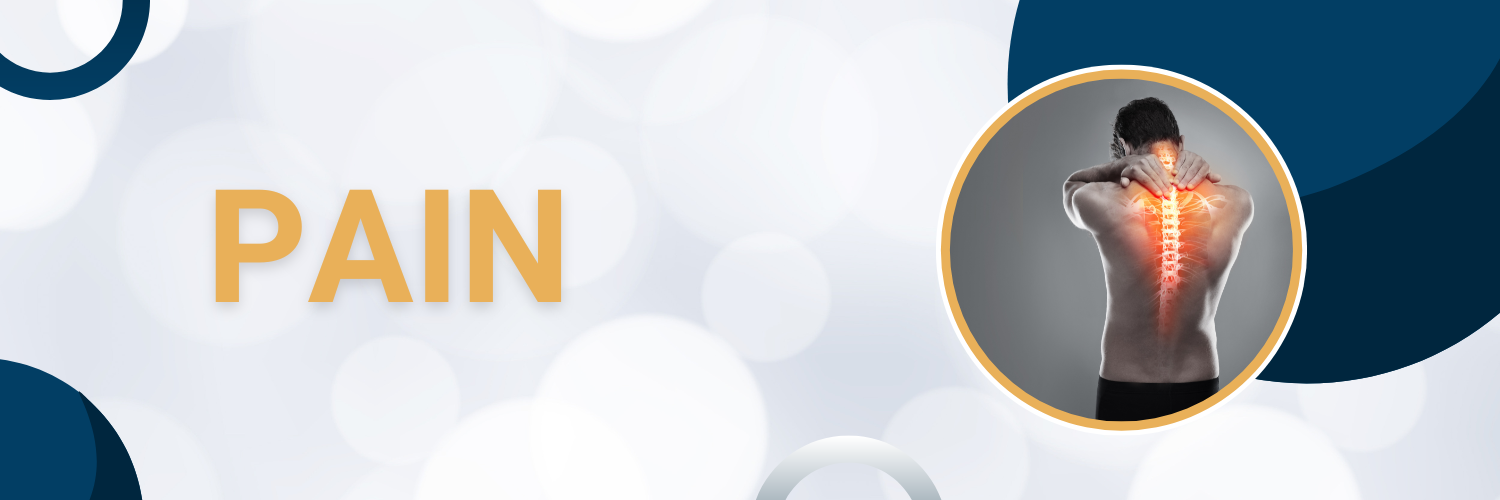

Pain
Understanding Pain: Types, Causes, and Management
Pain is an intricate and universal human experience. It serves as a protective mechanism, signaling that something is wrong within the body. However, it can also be debilitating and affect one’s quality of life. In this blog post, we delve into the different facets of pain, exploring its types, causes, and methods of management.
What is Pain?
Pain is a complex sensory and emotional experience typically associated with tissue damage or the perception of such damage. It can manifest in various forms, ranging from acute and localized discomfort to chronic and widespread agony. Understanding pain involves considering both its physiological and psychological aspects.
Types of Pain
Pain can be classified into several categories based on its duration, location, and underlying mechanisms:
1. Acute Pain: This type of pain typically arises suddenly and is often linked to tissue damage resulting from injury or surgery. Acute pain serves as a warning signal, prompting individuals to take action to prevent further harm.
2. Chronic Pain: Unlike acute pain, chronic pain persists for an extended period, usually beyond the expected time for tissue healing. It can stem from conditions such as arthritis, fibromyalgia, or nerve damage. Chronic pain may significantly impact daily functioning and often requires comprehensive management strategies.
3. Nociceptive Pain: Nociceptive pain occurs when specialized nerve fibers called nociceptors detect tissue damage or potential injury. It is often described as a sharp, aching, or throbbing sensation and can be either somatic (involving skin, muscles, or bones) or visceral (involving internal organs).
4. Neuropathic Pain: Neuropathic pain results from damage or dysfunction of the nervous system, leading to aberrant nerve signaling. It is characterized by burning, shooting, or tingling sensations and may occur in conditions like diabetic neuropathy, sciatica, or post-herpetic neuralgia.
Causes of Pain
Pain can have diverse origins, including:
– Injury: Trauma or physical damage to tissues can trigger pain signals.
– Inflammation: Conditions such as arthritis or infection can cause inflammation, resulting in pain.
– Disease: Chronic illnesses like cancer or multiple sclerosis may cause persistent pain.
– Nerve Damage: Injury to nerves or abnormalities in nerve function can lead to neuropathic pain.
– Psychological Factors: Emotional distress, anxiety, and depression can amplify the perception of pain.
Managing Pain
Effective pain management aims to alleviate discomfort, improve function, and enhance overall well-being. Treatment strategies may vary depending on the type and severity of pain but can include:
1. Medications: Analgesics such as acetaminophen, nonsteroidal anti-inflammatory drugs (NSAIDs), opioids, and antidepressants may be prescribed to alleviate pain.
2. Physical Therapy: Exercises, stretches, and modalities like heat or cold therapy can help reduce pain and improve mobility.
3. Interventional Procedures: Injections, nerve blocks, or surgical interventions may be recommended for targeted pain relief.
4. Psychological Support: Counseling, cognitive-behavioral therapy (CBT), and relaxation techniques can help individuals cope with chronic pain and reduce its impact on mental health.
5. Complementary Therapies: Techniques like acupuncture, massage, and mindfulness meditation may complement conventional treatments and provide additional relief.
Conclusion
Pain is a multifaceted phenomenon with significant implications for physical, emotional, and social well-being. By understanding its various types, causes, and management approaches, individuals can empower themselves to effectively navigate and mitigate the impact of pain on their lives. Seeking timely medical attention and adopting a comprehensive approach to pain management are crucial steps towards achieving relief and enhancing overall quality of life.

